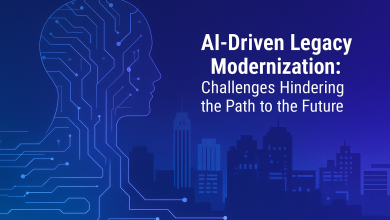Smarter Control in Steel Extrusions
Steel extrusion is a precise process where heated steel is forced through a die to create a desired profile. Every adjustment to speed, temperature, and pressure shapes the final outcome. Traditionally, operators have relied on gauges and data readouts to control these variables, but as profiles become more complex, human intuition alone can’t always keep up.
That’s where edge AI and haptic feedback come in. These two technologies are beginning to merge within modern extrusion machinery, offering operators a new way to feel and respond to real-time machine behavior. Instead of relying solely on digital displays or alerts, operators can now sense subtle changes through vibration, pressure, or tactile cues.
This kind of sensory communication could redefine how steel extrusions are managed, making the process more intuitive and precise while reducing downtime and waste.
Understanding Edge AI in Industrial Settings
Edge AI is a form of artificial intelligence that processes data locally on a device, rather than sending it to the cloud. In manufacturing, this matters because production lines can’t afford the delay of waiting for cloud-based analytics. Decisions need to happen in milliseconds.
In steel extrusion lines, edge AI models can monitor temperature, pressure, and material flow in real time. These models learn from past runs to predict how certain conditions might affect surface finish, thickness, or strength. Instead of waiting for quality checks after the extrusion is complete, edge AI can make small adjustments during the process.
Edge AI doesn’t replace skilled operators. It enhances their ability to respond. Machines can handle rapid, data-driven corrections, while humans can focus on higher level decision making like setting new profiles or adjusting tooling parameters for specialized projects.
How Haptic Feedback Bridges the Gap
Haptic feedback brings a physical layer of communication to machinery. It uses vibrations, pressure pulses, or slight resistance to relay machine data directly to the operator’s hands or controls. This feedback gives immediate awareness of what the system is doing, similar to how a driver can feel how their car handles a curve.
In an extrusion environment, where precision and timing are everything, that tactile connection can make a major difference. If pressure begins to spike, for instance, the operator might feel a gentle vibration that grows stronger as limits are approached. Instead of waiting for an alarm or watching for small needle shifts on a display, the operator senses the issue immediately and can respond instinctively.
Haptic feedback systems can also simulate machine conditions during training, allowing new technicians to experience what proper extrusion flow feels like before they operate the actual line. This creates a safer learning curve and helps reduce costly mistakes. When combined with edge AI, the tactile signals become more intelligent. The AI can decide not only when to send feedback, but also what kind of feedback is most useful at the moment. That coordination builds trust between humans and machines, each responding to the other’s strengths.
Adjustments and Intuitive Guidance
Complex steel profiles require fine tuned pressure and speed control. Even a small shift in material temperature or die condition can alter flow rates or cause defects. Traditionally, identifying and correcting these issues depended on experience and visual observation.
With edge AI integrated into the control system, sensors track hundreds of variables at once—motor torque, temperature gradients, material resistance, and more. The system learns what ideal extrusion behavior looks like for each specific profile.
If performance begins to drift from the ideal range, haptic cues can guide the operator’s hand toward corrective actions. A pulse in the control lever might suggest slowing the feed slightly, or a light vibration could mean pressure is approaching a limit. Instead of studying multiple screens, the operator can stay focused on the feel of the process.
This creates a more natural working rhythm. Operators don’t have to interpret raw numbers; they respond to tactile feedback informed by AI analysis. It’s a merging of intuition and intelligence that keeps production within tight tolerances without overcomplicating the interface.
Safety and Ergonomic Advantages
Extrusion lines run under high heat and pressure, which means any delay in response can lead to serious safety risks. By alerting operators through touch instead of sound or sight alone, haptic feedback reduces reaction time. It also helps prevent sensory overload in noisy or visually crowded environments.
Edge AI adds another safety layer by detecting potential hazards before they occur. If an abnormal vibration pattern suggests a bearing is failing or a die is clogging, the system can warn the operator immediately through a tactile signal. These early warnings allow for intervention before a breakdown or injury happens.
The ergonomic benefits are also important. Constant visual monitoring can be exhausting, especially during long shifts. Haptic alerts allow operators to stay engaged without staring at screens for hours, reducing eye strain and mental fatigue. Over time, this approach could help improve both safety and productivity across extrusion facilities.
Data Driven Learning for Continuous Improvement
Every extrusion run produces a large amount of data, temperature readings, motor speeds, force measurements, surface finish inspections, and more. In the past, much of that information went unused or was reviewed only after production ended.
Edge AI changes that by analyzing patterns in real time and storing meaningful data for review. Over multiple runs, it can identify trends, such as which temperature profiles yield better surface quality or how certain steel alloys behave under specific conditions.
When paired with haptic feedback, this learning can also be applied to operator training. Machines can replay tactile signals from previous runs, allowing trainees to feel how the system responded to ideal and non-ideal scenarios. This makes knowledge transfer more practical and grounded in physical experience, not just written instructions.
Implementation Challenges
Integrating edge AI and haptic systems into steel extrusions isn’t without obstacles. Retrofitting older equipment can be costly, and compatibility between new sensors and existing control systems may require custom solutions. Data quality is another challenge. Edge AI depends on accurate sensor inputs, and if those sensors are poorly calibrated or slow to respond, the AI’s decisions could be flawed. Regular maintenance and proper calibration become essential to keep the system reliable.
There’s also the question of operator acceptance. Experienced technicians may initially be skeptical about tactile alerts or AI-driven assistance. For adoption to succeed, companies need to involve operators early in the design and testing phases, ensuring that the feedback feels natural and genuinely helpful.
Despite these challenges, early adopters in related industries like automotive extrusion and aerospace alloy forming have already shown that the technology can work. Once systems are properly tuned, the long-term benefits in efficiency and consistency often outweigh the initial setup costs.
The Future of Steel Extrusions
As extrusion processes continue to evolve, combining tactile awareness with intelligent automation could become the new standard. Operators would no longer just oversee machines, they would work alongside them. Future systems might even adapt feedback styles to individual operators, learning their preferred sensitivity levels or reaction habits. Instead of one-size-fits-all controls, the machines could adjust to human tendencies, making work both more comfortable and more precise.
This kind of collaboration moves the industry beyond automation alone. It recognizes that human intuition still matters, especially when working with materials as complex as steel. Edge AI and haptic feedback don’t replace that intuition, they strengthen it by adding another sense of connection between the operator and the machine.
For manufacturers seeking to improve quality, reduce waste, and enhance safety, this integration represents a practical step forward. It’s not about futuristic concepts, but about making daily operations smoother and more responsive. As the technology matures, the steel extrusions sector could see significant gains in both performance and human engagement.




